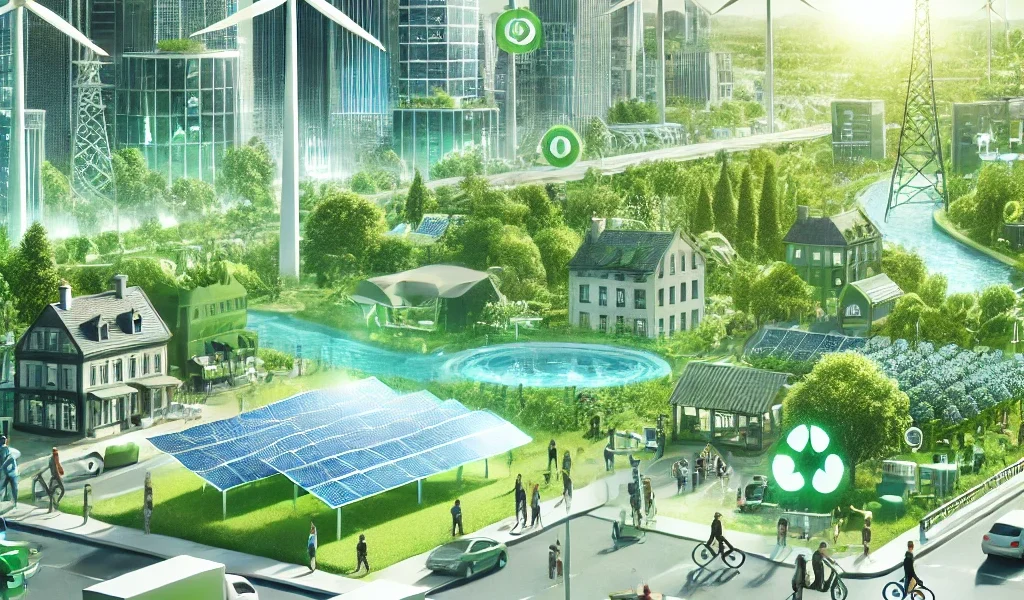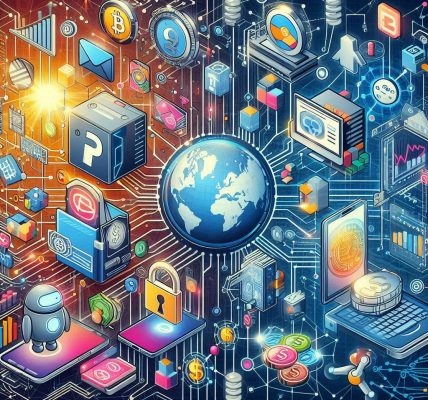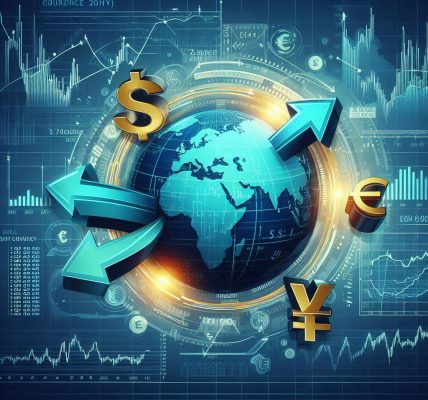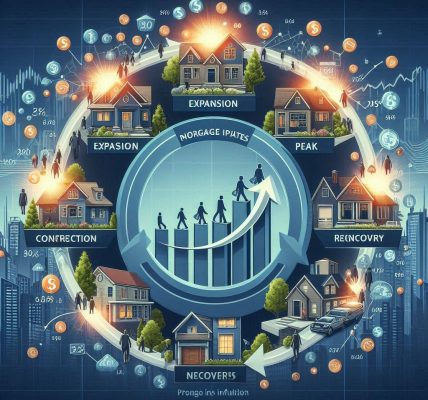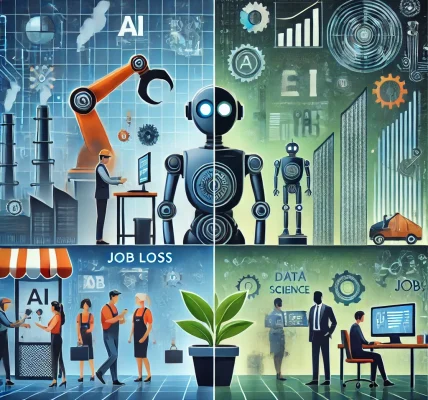Introduction
The global economy is undergoing a major transformation as sustainability and environmental concerns become top priorities for businesses, governments, and consumers. The shift toward a green economy is not just a trend but a necessary response to climate change, resource depletion, and increasing regulatory pressures.
A green economy promotes economic growth while ensuring environmental sustainability, social inclusivity, and efficient use of natural resources. Companies and investors are actively seeking sustainable solutions, reshaping traditional markets, and creating new opportunities. This article explores the key trends, challenges, and future outlook of the green economy and its impact on businesses and consumers worldwide.
Key Trends Driving the Green Economy
1. Renewable Energy Revolution
The transition from fossil fuels to renewable energy sources like solar, wind, and hydro is at the core of the green economy.
- Solar and wind energy costs are declining, making them more competitive than traditional energy sources.
- Government incentives and policies are driving investment in clean energy solutions.
- Companies are committing to net-zero emissions targets, increasing demand for renewable energy solutions.
2. Green Finance and Sustainable Investing
Investors are prioritizing Environmental, Social, and Governance (ESG) criteria when making financial decisions.
- Green bonds and sustainability-linked loans are growing as tools to finance eco-friendly projects.
- Banks and investment firms are divesting from fossil fuels and funding renewable projects.
- ESG-focused funds are outperforming traditional investments, attracting more capital.
3. Circular Economy and Waste Reduction
A circular economy focuses on reducing, reusing, and recycling to minimize waste and maximize resource efficiency.
- Companies are adopting sustainable packaging and biodegradable materials.
- Recycling and upcycling initiatives are gaining traction in manufacturing and retail.
- Tech innovations like AI-driven waste sorting and bioengineering solutions are optimizing recycling processes.
4. Green Transportation and Electric Vehicles (EVs)
The automotive industry is shifting toward electric and hydrogen-powered vehicles to reduce carbon emissions.
- EV sales are surging, with major automakers phasing out gasoline cars.
- Governments are investing in EV charging infrastructure to support mass adoption.
- Sustainable aviation fuels and electric aircraft are in development to decarbonize air travel.
5. Smart Cities and Sustainable Infrastructure
Urban areas are adopting eco-friendly infrastructure and digital technologies to enhance sustainability.
- Energy-efficient buildings with smart grids reduce electricity consumption.
- Public transportation networks are shifting to electric and hydrogen-powered systems.
- Urban farming and green spaces are integrated to improve air quality and food security.
Challenges in Transitioning to a Green Economy
1. High Initial Investment Costs
Although renewable energy and sustainable technologies lead to long-term cost savings, upfront costs remain a barrier for many businesses and governments.
- Infrastructure upgrades and technology development require significant financial investment.
- Small businesses and developing nations struggle to afford green solutions.
2. Policy and Regulatory Uncertainty
The lack of consistent global environmental policies can slow down green economy progress.
- Some nations have aggressive climate policies, while others remain heavily reliant on fossil fuels.
- Trade policies and carbon taxes vary, creating complexity for multinational businesses.
3. Consumer Behavior and Market Adoption
Despite increasing awareness, consumer adoption of sustainable products and services is not yet universal.
- Green products often have higher prices, discouraging mass-market appeal.
- Misinformation and greenwashing create skepticism among consumers.
- Businesses must invest in education and marketing to drive demand for sustainable alternatives.
4. Supply Chain and Resource Constraints
Sourcing sustainable materials and maintaining an eco-friendly supply chain can be challenging.
- Limited availability of rare minerals (used in batteries and solar panels) raises concerns.
- Disruptions in the supply chain due to geopolitical factors can delay the transition to green production.
Opportunities for Businesses and Investors
1. Expansion of Green Jobs and Workforce Development
The green economy is creating millions of new jobs in industries like renewable energy, sustainable agriculture, and green construction.
- Businesses investing in workforce reskilling can benefit from government grants and incentives.
- STEM careers focused on sustainability are in high demand.
2. Rise of Sustainable Brands and Eco-Friendly Products
Consumers are increasingly favoring brands that prioritize sustainability.
- Companies that invest in sustainability gain a competitive advantage and customer loyalty.
- Eco-labeling and carbon footprint tracking help differentiate products in the market.
3. Innovation in Green Technologies
Technological advancements in clean energy, sustainable materials, and smart systems are driving growth.
- AI and IoT (Internet of Things) enable efficient energy management.
- Biodegradable and plant-based alternatives to plastics are revolutionizing industries.
4. Carbon Credits and Market Incentives
Governments and private organizations are monetizing sustainability through carbon credits and tax benefits.
- Businesses that reduce emissions can sell carbon credits to polluting companies.
- Subsidies and tax incentives encourage corporations to go green.
Future Outlook: What to Expect?
As governments, corporations, and individuals continue to embrace sustainability, the green economy will play a central role in global economic growth. Key developments to watch include:
- More aggressive climate policies and carbon pricing mechanisms.
- Breakthroughs in renewable energy storage and efficiency.
- Wider adoption of electric vehicles and expansion of charging networks.
- Stronger public-private partnerships to finance green projects.
- Greater emphasis on biodiversity conservation and climate adaptation strategies.
Conclusion
The green economy is no longer just an environmental initiative—it is a market force reshaping industries and consumer behavior. Companies that embrace sustainability will not only contribute to a healthier planet but also gain long-term profitability and market leadership.
By investing in renewable energy, sustainable products, and innovative green technologies, businesses can capitalize on new opportunities while reducing their environmental impact. Governments must continue to implement pro-growth, pro-environment policies that encourage green investments and ensure a sustainable future for all.
The transition to a green economy is a collective effort—from policymakers and corporations to investors and consumers. Those who adapt early will benefit the most from this economic transformation.
Disclaimer
This article is for informational purposes only and does not constitute financial, legal, or investment advice. Readers should consult with professionals before making sustainability-related investment decisions.
